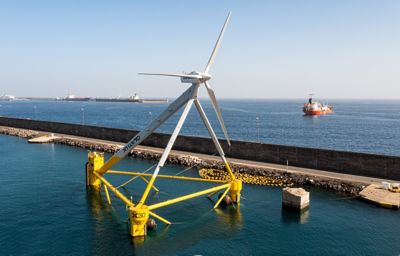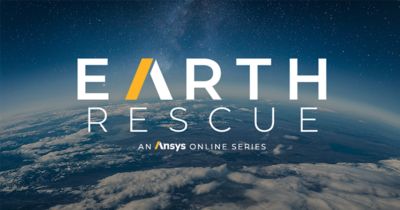-
-
学生向け無料ソフトウェアにアクセス
Ansysは次世代の技術者を支援します
学生は、世界クラスのシミュレーションソフトウェアに無料でアクセスできます。
-
今すぐAnsysに接続!
未来をデザインする
Ansysに接続して、シミュレーションが次のブレークスルーにどのように貢献できるかを確認してください。
国および地域
無料トライアル
製品およびサービス
リソースとトレーニング
当社について
Back
製品およびサービス
ANSYS BLOG
November 8, 2022
Earth Rescue: Energizing the Fight Against Climate Change
We need more power to keep up with global energy demands. Traditionally, that energy is supplied by burning fossil fuels. While they are plentiful and currently supply about 80% of the world’s energy1, they are non-renewable and have had detrimental effects on the Earth. According to the Intergovernmental Panel on Climate Change (IPCC), fossil fuel emissions are the dominant cause of global warming. In 2018, 89% of global CO2 emissions came from fossil fuels.2
As world leaders from government, business, and climate organizations come together at the United Nations Framework Convention on Climate Change (COP27), people around the world are researching and developing new ways to reduce the impact of climate change.
Ansys customers are using simulation to efficiently develop breakthrough technologies that energize the fight against climate change. From unlocking the power of renewable energies to removing orbital debris from space, our online series Earth Rescue tells the stories of innovative companies applying their engineering genius and Ansys simulation solutions to combat climate change.
Each episode of this four-part series features Ansys customers who use simulation to develop revolutionary technology to better our planet. The first two episodes focus on the energy sector. Episode 1 highlights Ansys customers who are making strides in clean energy — from developing geothermal technologies to emission-free energy storage systems. Episode two focuses on new ways to power our modern lives.
Offshore Wind Platforms
From gentle breezes blowing across a field to the roaring wind at the oceanfront, wind is a perpetual source of natural energy. But harnessing its energy is far from easy. Land for wind farms is at a premium and deep-water wind farms have proven difficult and costly to maintain — until now.
X1 Wind is developing an innovative solution for deep-water wind farms: offshore floating wind platforms.

The advantage? There is simply more wind near the ocean, and the further out to sea you go, the stronger the winds are. Fixed platforms can only be done in shallow water, whereas floating platforms can traditionally be used at 150- to 200-meter depths. X1 Wind platforms, on the other hand, can go to 2,000-meter depths, enabling them to be installed further out to sea and harness the stronger winds.
X1 Wind uses Ansys simulation solutions for the structural design of their platforms. Before creating their prototype, X1 Wind tested the structural soundness of the platform to determine just how much force the platforms can take.
Transporting Carbon-Free Fuels
Hydrogen is proving to be an attractive alternative energy source, as its only byproduct is water. But it is highly volatile and flammable, making it difficult and dangerous to transport. Fortunately, Baker Hughes is accelerating hydrogen deployment as an alternative source of energy.
Innovative testing is built into Baker Hughes’ design process. Whether it be 3D printing or additive manufacturing, advanced simulation tools help turn concepts into realties.
Carbon-Free Fusion Energy
Fusion, which occurs when two nuclei combine to form a new nucleus, produces a colossal amount of energy. We know this works because the proof is in the Sun. But what we don’t know is if it can be reproduced here on Earth. General Fusion is closer than ever to making this vision a reality. Simulation is helping bring the commercialization of fusion energy closer than we’ve ever thought possible.
To learn how innovators around the world take a leap of certainty with Ansys, tune into Earth Rescue to see how Ansys simulation solutions are helping create a better future.
References
- “Fossil Fuels Still Supply 84 Percent Of World Energy — And Other Eye Openers From BP’s Annual Review,”Forbes, June 20, 2020
- “Fossil Fuels and Climate Change: The Facts,” ClientEarth, February 18, 2022
